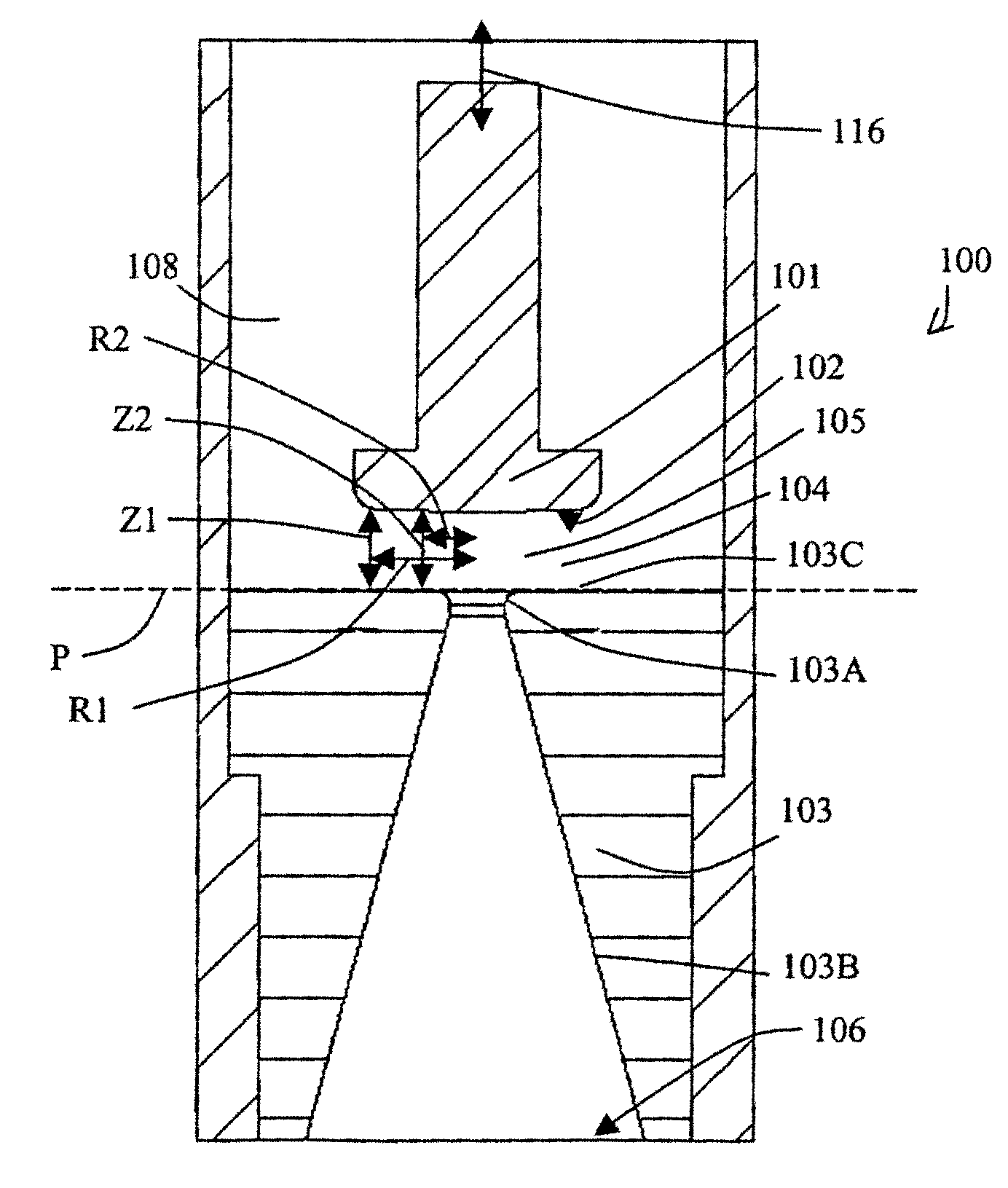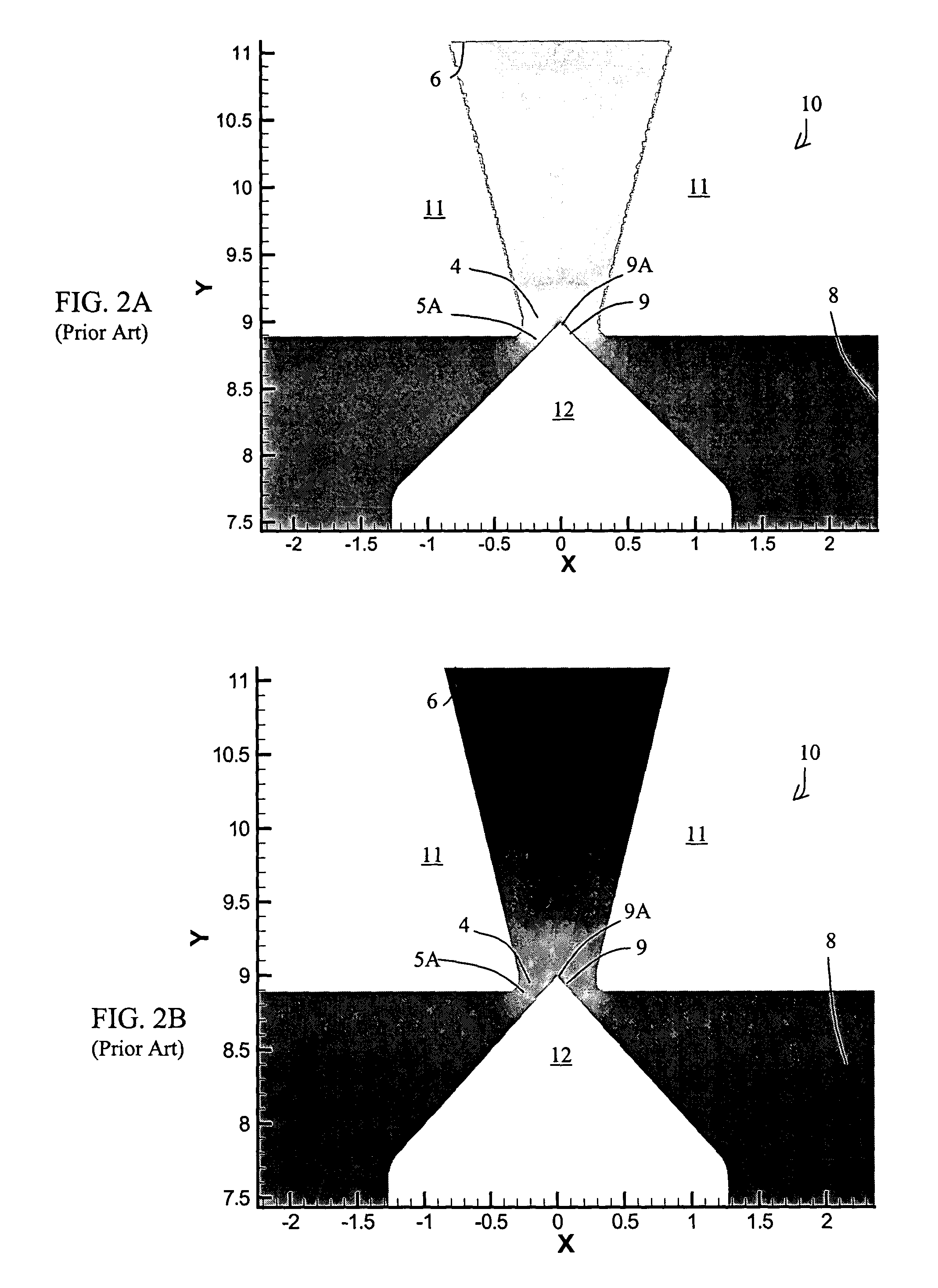Fluent control valve
a technology of control valve and fluid flow, which is applied in the direction of process and machine control, liquid engine with positive displacement, instruments, etc., can solve the problems of high rate of material ablation and erosion at the nozzle inlet, reducing the velocity and thrust obtained from the fuel, and affecting the operation of the valve. , to achieve the effect of reducing the cost of fabricating variable thrust rocket motors, reducing the cost of manufacturing, and reducing the variation of thrus
- Summary
- Abstract
- Description
- Claims
- Application Information
AI Technical Summary
Benefits of technology
Problems solved by technology
Method used
Image
Examples
Embodiment Construction
[0044]The computational flow dynamic (CFD) illustrations submitted with this application are color graphs, whereby the various temperatures, pressures, and Mach conditions are indicated by colors and color gradations. In all illustrations, the highest values are indicated by the color red and the lowest values by the color blue. A normal shock wave is generally indicated by the color yellow.
[0045]FIGS. 1A and 1B illustrate a traditional 45-degree valve 10 with a nozzle 11, a 45-degree pintle 12, a valve plenum 8. The valve is traditionally set into a housing which locates the nozzle and pintle into position. The nozzle 11 has an upper surface 11A, a nozzle inlet 4 and a nozzle exit 6, and the pintle 12 has a tip 9A. The portion of the pintle 12 that extends into the fluid flow provides a fluid control surface 9 that redirects the flow direction toward the nozzle exit 6. A fluid dynamic throat 5A forms between the nozzle inlet 4 and the pintle 12 as the valve 10 opens.
[0046]FIG. 2A a...
PUM
 Login to View More
Login to View More Abstract
Description
Claims
Application Information
 Login to View More
Login to View More - R&D
- Intellectual Property
- Life Sciences
- Materials
- Tech Scout
- Unparalleled Data Quality
- Higher Quality Content
- 60% Fewer Hallucinations
Browse by: Latest US Patents, China's latest patents, Technical Efficacy Thesaurus, Application Domain, Technology Topic, Popular Technical Reports.
© 2025 PatSnap. All rights reserved.Legal|Privacy policy|Modern Slavery Act Transparency Statement|Sitemap|About US| Contact US: help@patsnap.com



